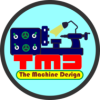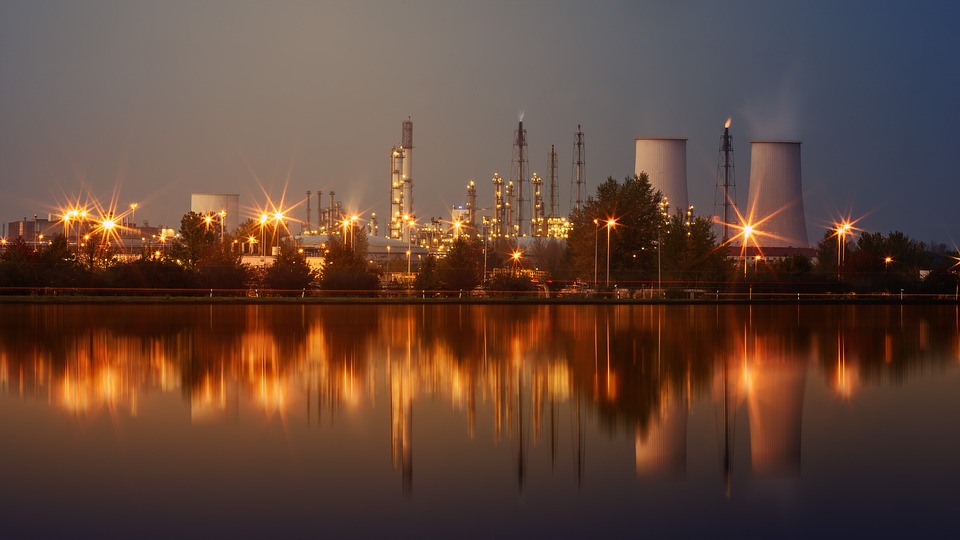Do you have to think that In your house electric power comes from where? How to produce electric power? In our world, electric power is generated by various conventional and renewable methods like thermal, solar, wind, hydel, biomass, geothermal, etc. Hydro electrical plants, generate around 17% of power in the world. Now it is also a question, How do hydro-electrical power plants generate power from hydro or water? The answer is Hydraulic turbines. And How Hydraulic Turbines works?
Let’s, we will discuss what are hydraulic turbines, their working principles, history, the layout of hydraulic power plants, the types of hydraulic turbines, and their advantages – disadvantages in this post.
Page Contents
What are Hydraulic Turbines?
Hydraulic turbines are rotary machines that convert the energy of fluid (usually water) flow into mechanical energy. And this energy further converts into electrical energy by rotating the shaft of the dynamo.
The energy of the fluid flow is known as hydraulic energy, which is converted into mechanical energy through hydraulic turbines. And an electric generator coupled with the turbine shaft converts the hydraulic energy into electrical energy.
The electric power generated through hydraulic energy is called Hydroelectric power. Hydroelectric power is a controlled method for generating power by utilization of water. These hydraulic turbines are mostly found in dams to generate electric power. The main purpose of bogger dam construction is to produce Hydroelectric power and then irrigation is secondary purpose.
History of Hydraulic Turbine:
Hydraulic turbines are used for centuries for power applications in industry. At that time Water wheels were used to obtain mechanical energy from hydraulic energy. But, the main disadvantage was the size of the water wheel and high head, which limits the flow rate of water.
During the Industrial revolution, the design of the water wheel or turbine was improved with the help of scientific principles and methods. In amendments of designs and layout of hydraulic turbines also changed in materials of turbines to improve strength and longer life turbines.
World’s first hydroelectric power plant The Vulcan Street Plant started operation in 1882, on the Fox River in Appleton, Wisconsin. This power station began the operation to provide electric power to the paper industry, Appleton paper manufacturer H.J.Rogers. Later, the plant was named Appleton Edison Light Company.
The world’s largest hydroelectric power plant with a power generation capacity of 22,500 is located on the Three Gorges Dam, Hubei province (China).
What is the working principle of a Hydraulic Turbine?
Hydraulic turbines are based on Newton’s second law. According to newton’s law, the rate of change of momentum of a body is directly proportional to the applied force. So, in the turbines, force is generated by changes in the moment of water. This force is applied against turbine blades or buckets.
Changing in moments results, pressure force generated, rotates the turbine. As the change in momentum is high, the resulting generated force also high, which increases the energy conversion. To consider this principle, the blades or buckets are designed so they can convert the maximum energy of water.
Hydraulic Power Plant Layout:
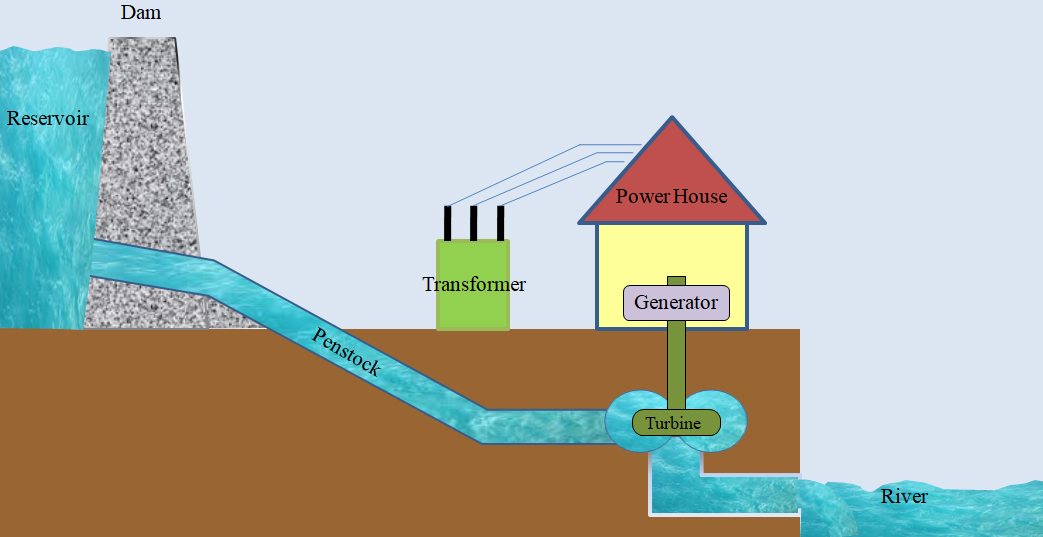
A Hydroelectric power plant is consists of:
- Water storage in a dam across a river.
- The pipe has a large diameter to carry water with pressure from the storage reservoir to the turbines. Generally made by reinforced concrete or steel. This pipe is penstocks.
- Any kind of turbine mounted on the wheel.
- A channel that carries water away from the turbines after moving the turbine. This channel is Tail Race. Even, the water surface in the tailrace channel is also known as a tailrace.
- A generator is linked or coupled with the turbine shaft, to convert mechanical power into electrical power.
- Step Up Transformer and powerhouse, to control and transmission of generated power.
Basic Classification of Hydraulic Turbines:
Classification of Hydraulic turbines is based on the type of available energy at the inlet of the turbine, the head at the inlet of the turbine, the direction of flow through the runner, and the specific speed of the turbine.
- According to available energy at the inlet of the turbine.
(a) Impulse Turbine, and (b) Reaction Turbine. - According to the head at the inlet of the turbine.
(a) High head turbine (b) Medium head turbine, and (c) Low head turbine - According to the direction of flow through the runner.
(a) Tangential flow turbine (b) Radial flow turbine
(c) Axial flow turbine (d) Mixed flow turbine.
Impulse Turbine and Reaction Turbine
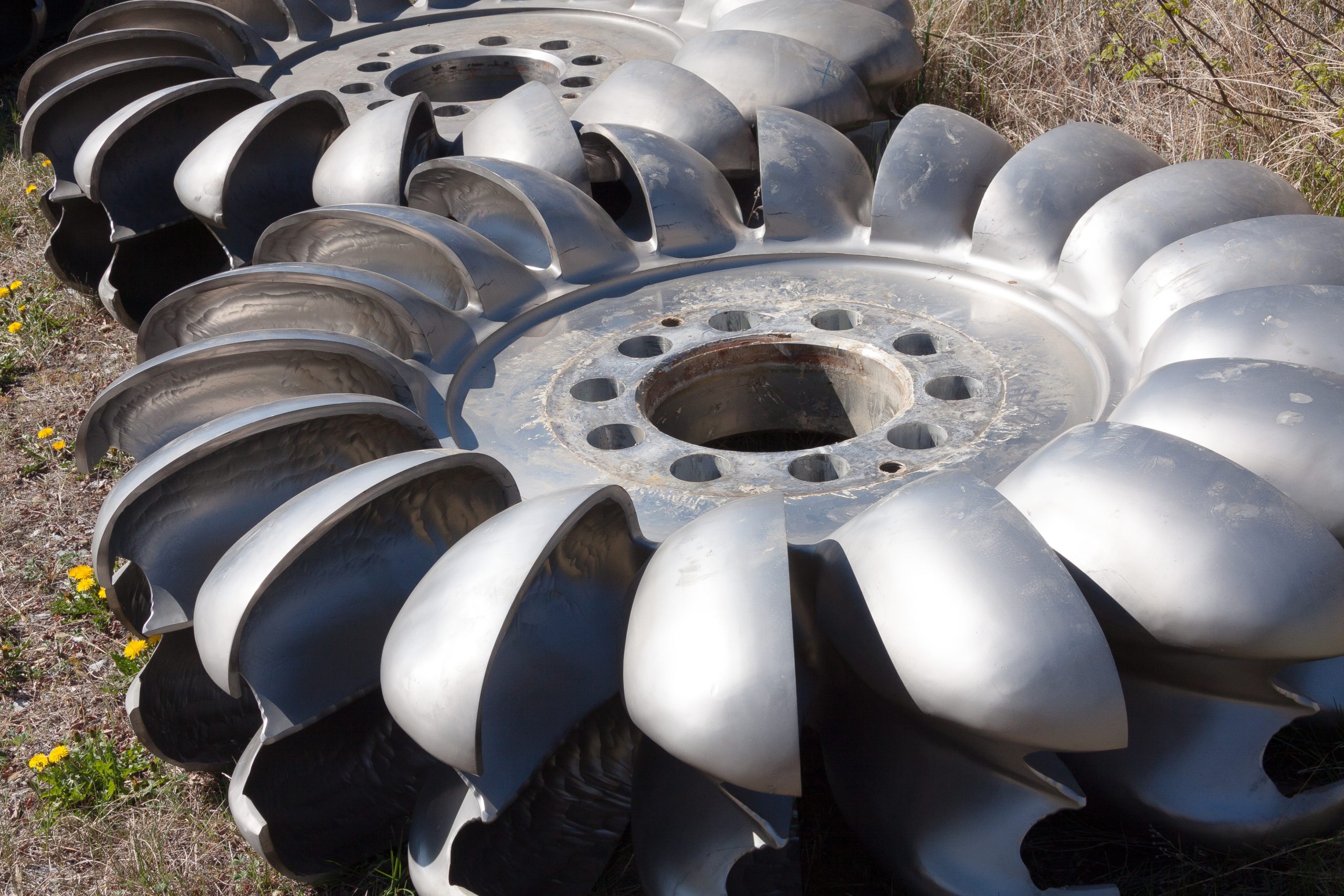
If the turbine is driven by the available kinetic energy of fluid at the inlet, the turbine is known as an impulse turbine. In impulse turbines, high kinetic energy is obtained using a nozzle at the inlet which directs the water flow to the vanes of the turbine. If the turbine is driven by the fluid’s kinetic energy as well as pressure energy, the turbine is known as a reaction turbine. Most turbines are based on both impulse and reaction turbine principles. But, the Pelton turbine is purely based on the principle of impulse turbines.
Also Read:
- Top Most Expensive Materials in the World
- Basic Types of Screwdrivers and Uses
- Hydrogen Fuel Cell Cars: A Closer Look at the Technology
Tangential and Radial Flow Turbine
If the water flows in a tangent direction to the runner, this type of turbine is known as a tangential flow turbine. If water flows in the radial direction to the runner, the turbine is a Radial flow turbine. While the water flows from outwards to inward or center of the radii of the runner, these types of turbines are inward radial flow turbines. And in an outward radial flow turbine, this water flows radially from inwards to the outward side.
Axial Flow Turbine
In the axial flow turbine, the water flows through the runner, along the parallel direction of the rotational axis of the runner. But, when water enters the runner radially but leaves in the parallel direction of the rotational axis, that turbine is a mixed flow turbine.
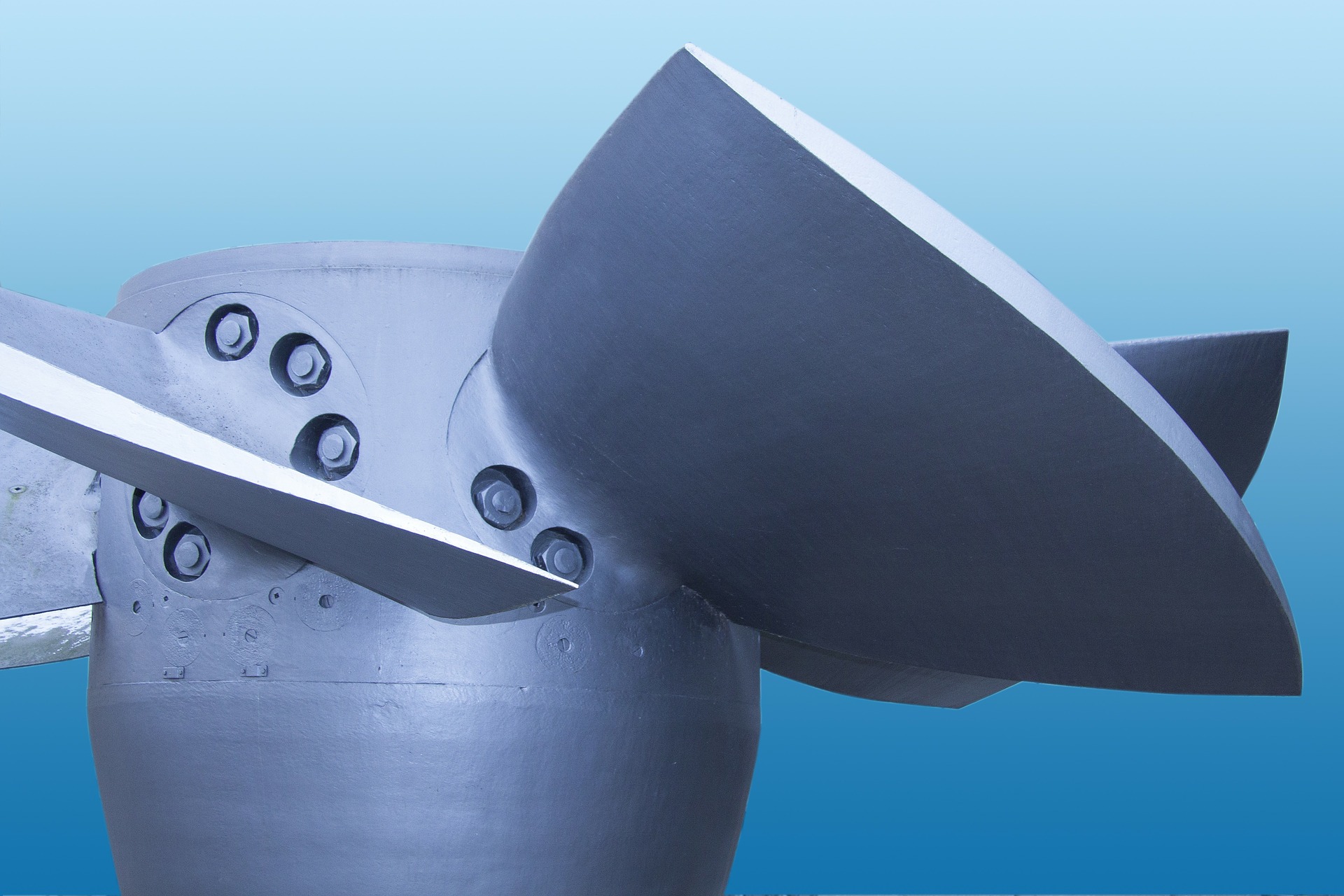
What are the Advantages of Hydraulic Turbines?
- Hydraulic turbines are operated by hydraulic energy, obtained from flowing water. Flowing water is neither consumed nor converted into other. So, water is a renewable source of energy.
- No products produced from hydraulic turbine operations are harmful to the environment. It is an eco-friendly energy source. Like thermal, diesel, nuclear power plants, etc. That produces ash and gases which affects to the environment.
- Water is a gift of nature, It is freely available on the Earth. The hydraulic turbine’s operational cost is cheaper.
- Easy maintenance.
- It has high efficiency.
- The dam, constructed for hydraulic power plants is also can be used for various purposes like tourism, boating, fishing, agriculture water storage, etc.
- The dam made for hydraulic turbines also helps to flood control.
What are the disadvantages of Hydraulic Turbines?
The advantages of hydraulic turbines, having also some drawbacks. Some of them are:
- Because the hydraulic turbine requires a dam and structure for runners and vanes. So, the initial cost is high.
- It can construct only limited sites, where the proper quantity of water and the required height of the head is available.
- Water quality also matters for the turbines, salty water can increase the maintenance cost.
- Sometimes, a large dam catchment area also can destroy natural environments at the site.
- Yes, water is a gift of nature, but sometimes, mother nature takes return by taking the lives of humans and animals by huge floodings.
Hydraulic Turbines: Conclusion –
In this article, we have studied Hydraulic turbine history, working principle, hydraulic power plant layout, classification of hydraulic turbines, and their advantages and disadvantages. We will discuss various types of turbines individually in the next article.
If you have any queries regarding this article, please comment in the comment box. This article is helpful for you? Please like and share it. Your review will help us to improve content quality. If you have any queries regarding this article, please comment in the comment box. This article is helpful for you? Please like and share it.
